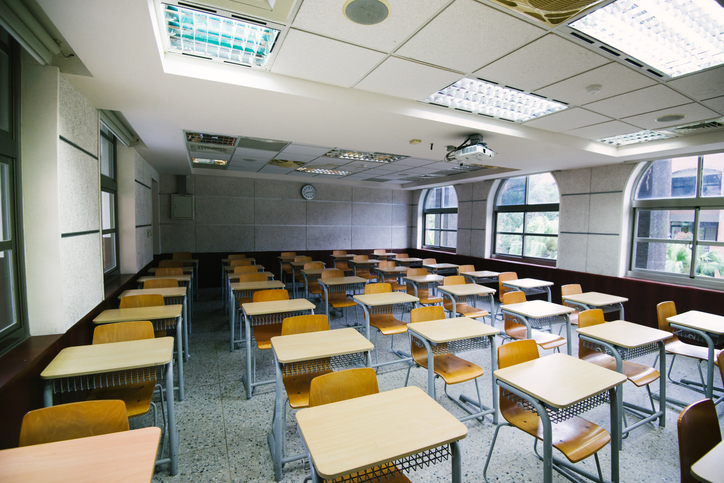
The following blog was contributed by John James, Ed.D., professor of educational leadership at St. Louis University School of Education.
Catholic schools stand as an exemplar and a contradiction. They serve as a powerful creator of social capital, a point of engagement with families for the Church and a powerful disciple-making tool; but operate within a complex market economy dominated by a loss of social cohesion and a consumeristic culture. They serve a critical apostolic mission of the Church and spiritual work of mercy, but must close schools for the most vulnerable and for those who might benefit the most. Catholic school closures in 2019-2020 disproportionately impacted underserved families and non-Catholic families. Black families, Title I students, urban communities and non-Catholics were overrepresented in the demographic sample of closed Catholic schools. The decline of 6.4 percent was driven by a 26.6 percent decline in pre-kindergarten enrollment. Maybe it’s parents working from home, taking a shot at home-schooling, and they will return post-COVID; maybe they won’t. This is no time for complacency. There is serious work to be done!
So why did high schools fare better and are there any lessons regarding governance, administration and finance? Possibly. The median elementary school enrollment in 2019 was 215, compared with 510 for secondary schools; larger schools afford greater efficiencies of scale. Parish investment as a percentage of the school operational budget has remained relatively static in the 9-12 percent range over the last ten years. Secondary school advancement as a percentage of the school operational budget increased from 7.3 percent in 1988 to 13.9 percent in 2018. What is the impact on tuition? Between 2006 and 2019, the average tuition as a percentage of the cost to educate a student increased from 61.1 percent to 75.3 percent in elementary schools, and decreased from 81.5 percent to 73.3 percent in secondary schools.
The disparate impact on urban centers, underserved populations and elementary schools is a logical consequence of a fee-for-service model without much equalization aid. Certainly, many archdioceses have generous tuition-aid programs such as the Today and Tomorrow Foundation here in Saint Louis. However, application of distributive justice to support and sustain Catholic schools is a mixed bag. In 2004, only 33 percent of dioceses had policies and guidelines regarding financial support from non-school parishes that have parishioners attending a neighboring Catholic school; in 2009 that percentage had risen to 48 percent. In 2004 only 14.4 percent of dioceses had policies that required financial support for Catholic schools from all parishes, regardless of whether they have a school or not; in 2009 that percentage had risen to only 28.7 percent. It’s difficult to argue for distributive justice in the public square when we don’t practice it ourselves.
This leads to the last area for serious reflection: mobilizing parents to demand true educational freedom. Espinoza vs. Montana Department of Revenue (2020), following Arizona v. Winn (2011) has opened the door for the aggressive consideration of tax-credit student tuition organizations that present opportunities for the poor to attend Catholic schools. This is a watershed moment for every Catholic school board to have a “legislative whip” connected upwards to the diocesan office and to the State Catholic Conference, and downwards to the “class captains” for each grade. It’s one thing to hear of some rumblings about some tax-credit thing going on in an education committee at the state legislature; it’s another thing entirely when the State Catholic Conference puts out a call to its “legislative whips,” who send the message to “class captains” for each grade, and individual parents get a personal email from a parent they know who calls on them to rally for their rights as parents. Australia had its Goulburn moment in 1962 that led to financial support for its Catholic schools. It’s time for ours!